Kalmar has seen a huge difference in results between this season and the previous. Having finished in the relegation play-offs in the 2020 and 2019 seasons, respectively, the team has evolved and finished 2021 sixth on the table. A huge part of the credit for this goes to their head coach, Henrik Rydstrom, for creating such an impact in his first season at the club.
In this tactical analysis, we’ll perform an analysis of Rydström’s tactics and how the team performs in different phases of the game. We’ll also look to see where the team has improved from the previous season and what the future holds for both Kalmar and Rydstrom.
Team Overview
Rydström was appointed right at the beginning of the season, and it wasn’t too late for him to start creating an impact. He had already managed the youth teams of Kalmar and was also part of the first team as assistant manager way back in 2017 and 2018.
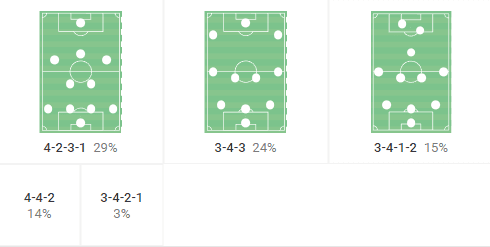
Beginning with the team’s preferred formation, we can see that they have lined up in a 4-2-3-1 formation the most, 29% of the time, with their second-most preferred formation being the 3-4-3 with 24%. Rydström prefers to have control over the game and most of the possession. Based on the match situation, he tends to alter the team formation to gain control.
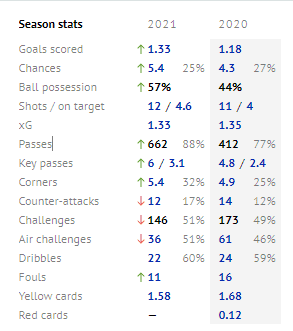
On comparing their numbers to the previous season, we can clearly see a rise in quite a number of metrics — especially ball possession which has risen from 44% to 57%. This has clearly influenced their ability to create more chances, attempt more key passes and as a result, they have been able to score more goals when compared to previous seasons.
In the following sections, we’ll analyse the team’s behaviour in different phases of the game.
Out of possession
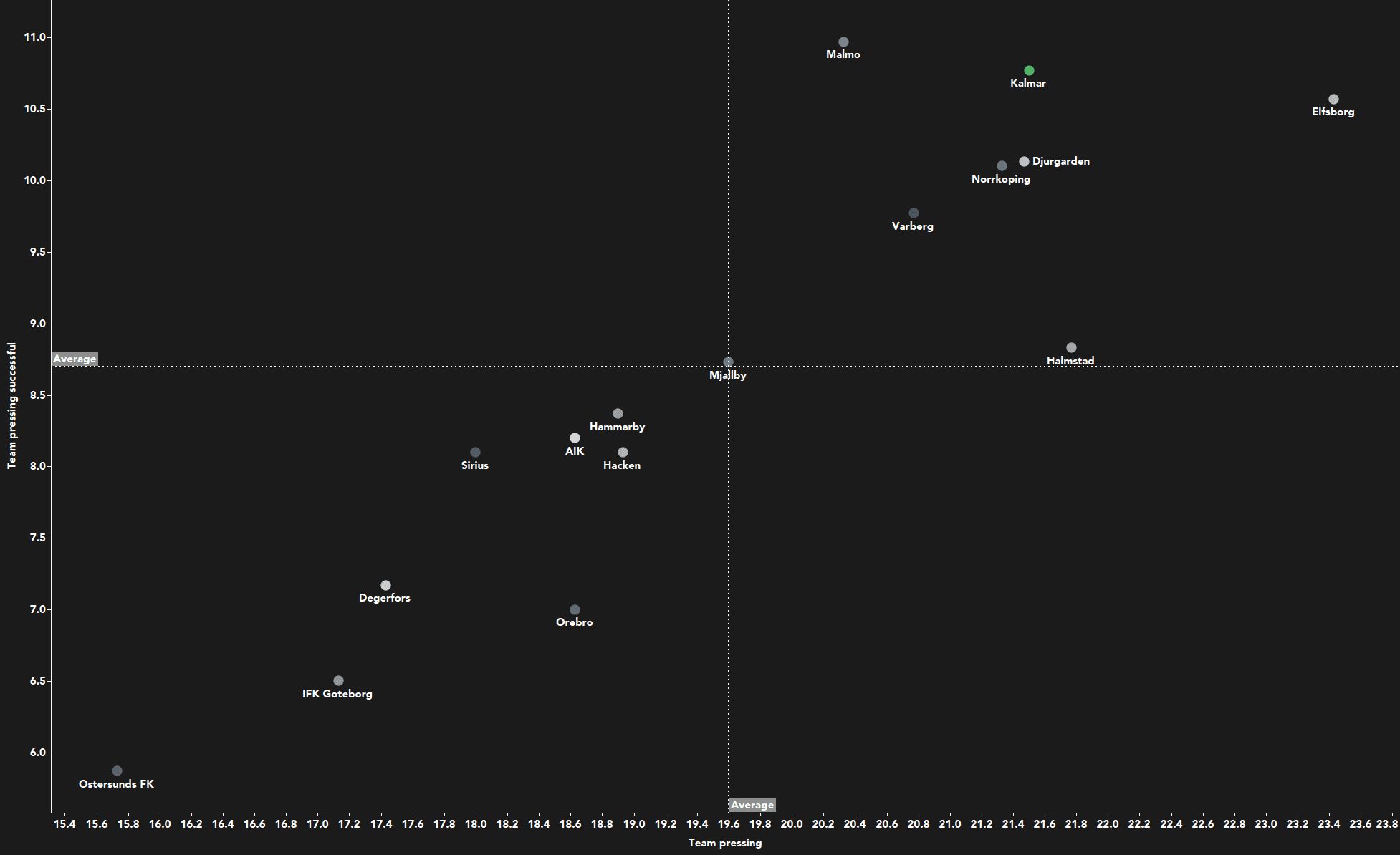
On trying to look at how Rydström’s team react when out of possession, we can see that his team is among those who press more aggressively to recover possession, and it’s even more interesting to see that the team is in second place behind the league winners, Malmö, when we look at the number of successful presses per 90 by the team.
Out of possession, the team stays in a 4-2-3-1 formation where the front four are in a rhombus shape. With the striker going for the opponent’s ball carrier, the two attacking midfielders tend to cover the sides and provide the funnel support, making sure there are no through balls and forcing them to play diagonally. The central attacking midfielder looks to balance the front three by closing down gaps if any appear and also nullifies the opponent’s free man who constantly moves to show space in the middle.
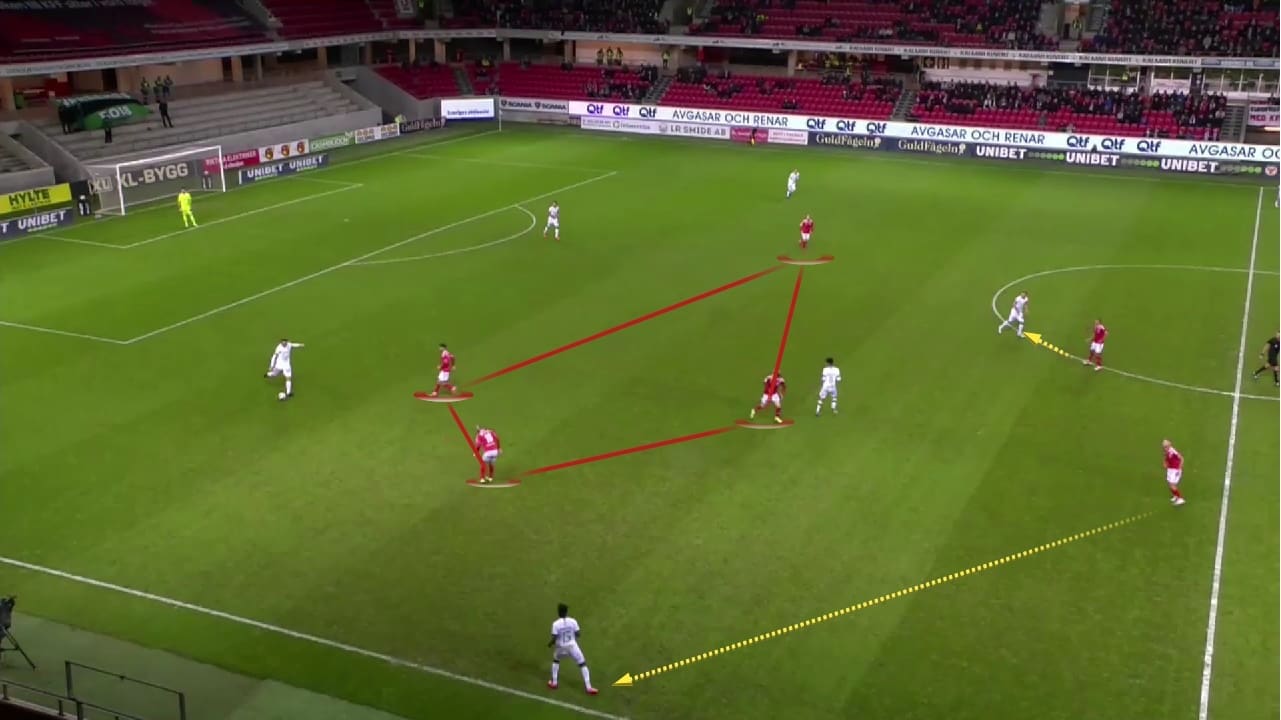
This is a common behaviour exhibited by Kalmar when the opponents are building out from the back. They either force the opponents to go long or pass to the flank. The main ideology behind Rydström’s side while defending is to make sure they are compact and cut off all the passing channels to make their progression hard.
Once the opponent crosses the halfway line, the structure is now based on how the opposition progress and the match situation. If the opponents are quick and able to find spaces easily, they often tend to defend in a 4-1-4-1 formation.
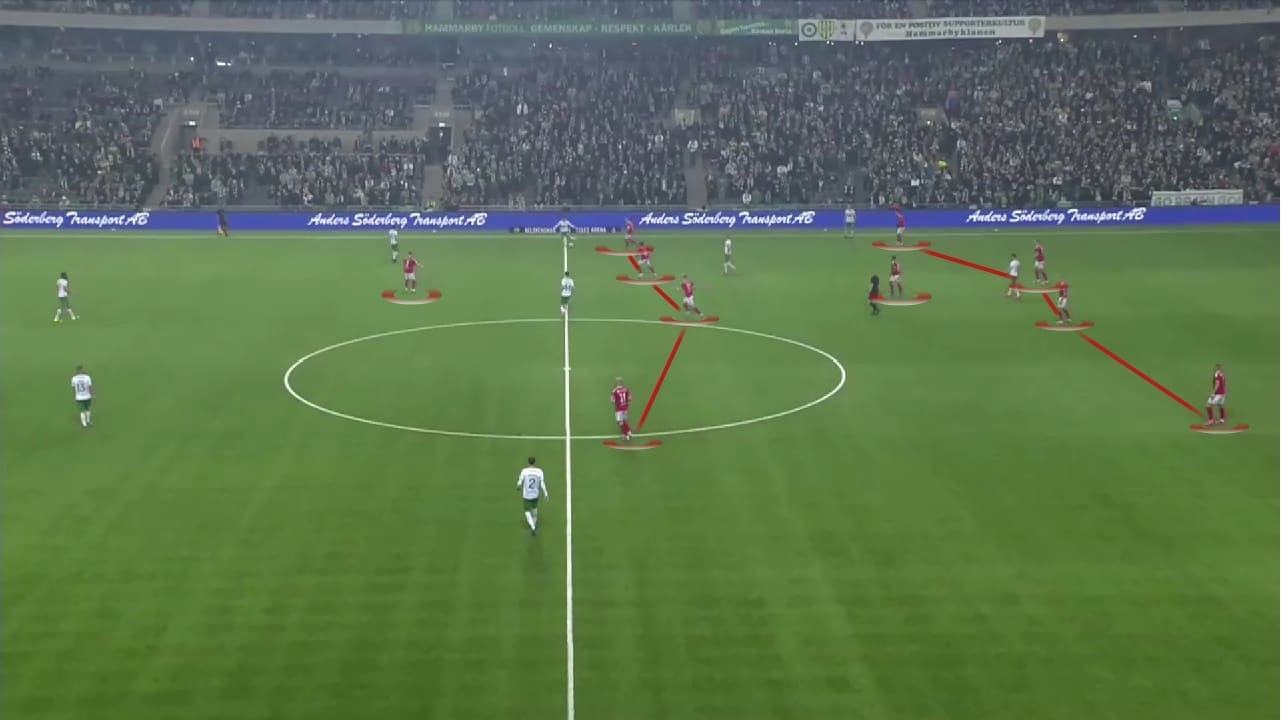
All three attacking midfielders combine with their defensive midfielder and make it too compact for the opponents to progress through the centre. When on the flank, we can see that the closest three are compact giving no chance for progression and forcing them to switch sides while the farthest player in the midfield four is also balancing the position while, at the same time, marking the free man on the line so that he can quickly close down the nearest player. The sole defensive midfielder is responsible for nullifying anyone who moves around the space in between the defensive line and the midfield line. Meanwhile, the striker cuts down the rear passing lanes and indirectly puts pressure on the ball possessor.
Moments of transition
Rydström’s tactics on transitions are very precise and clean. In the transition to defence, the main ideology is to make sure that they delay the opponents’ attack and either slow down the game or win possession immediately, if possible.
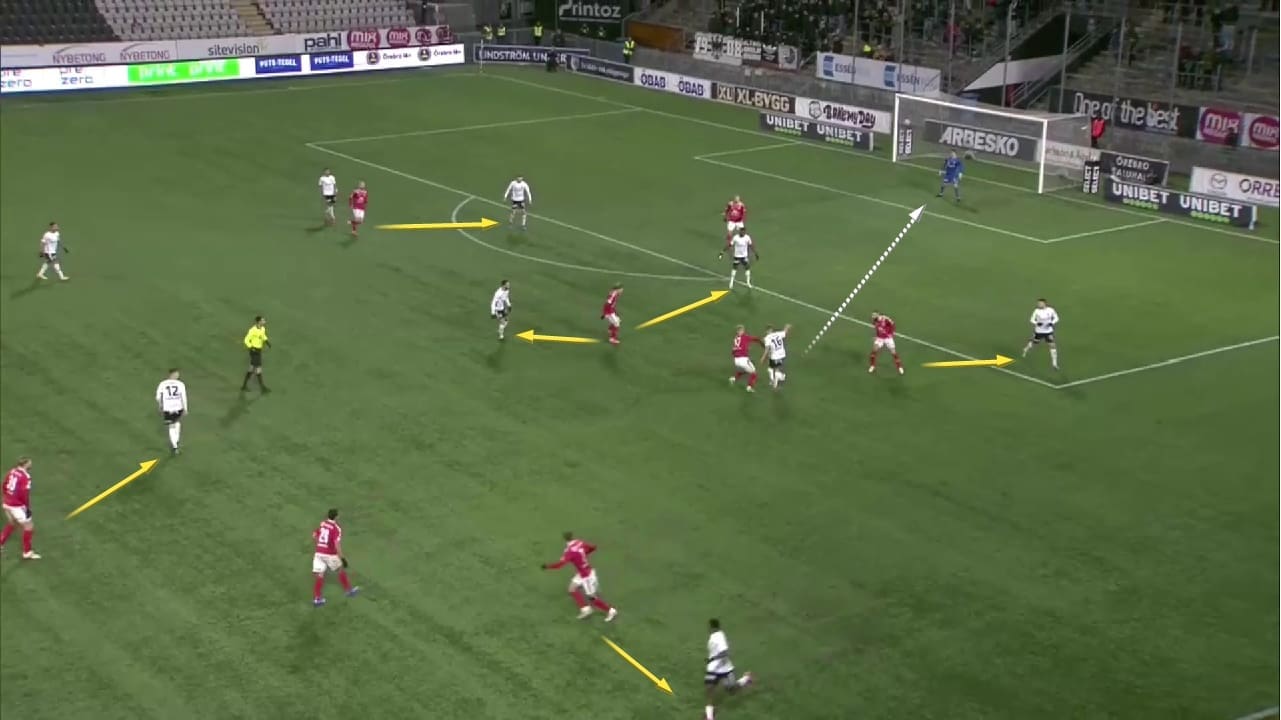
Upon losing possession in the final third, we can see that the players are covering every possible free man and delaying the opponents’ attack, forcing them to pass it to the goalkeeper. The pressure applied on the ball carrier makes it difficult for him to even turn and, as a result, he’s forced back to the ‘keeper with no choice left. Kalmar is also among those teams who attempt more high presses than low presses in the game, indicating how they react in their transition to defence.
When they lose the ball in their own half, they still stick to the same principles and buy time for their teammates to become fully organised as they move into the defensive phase of the game.
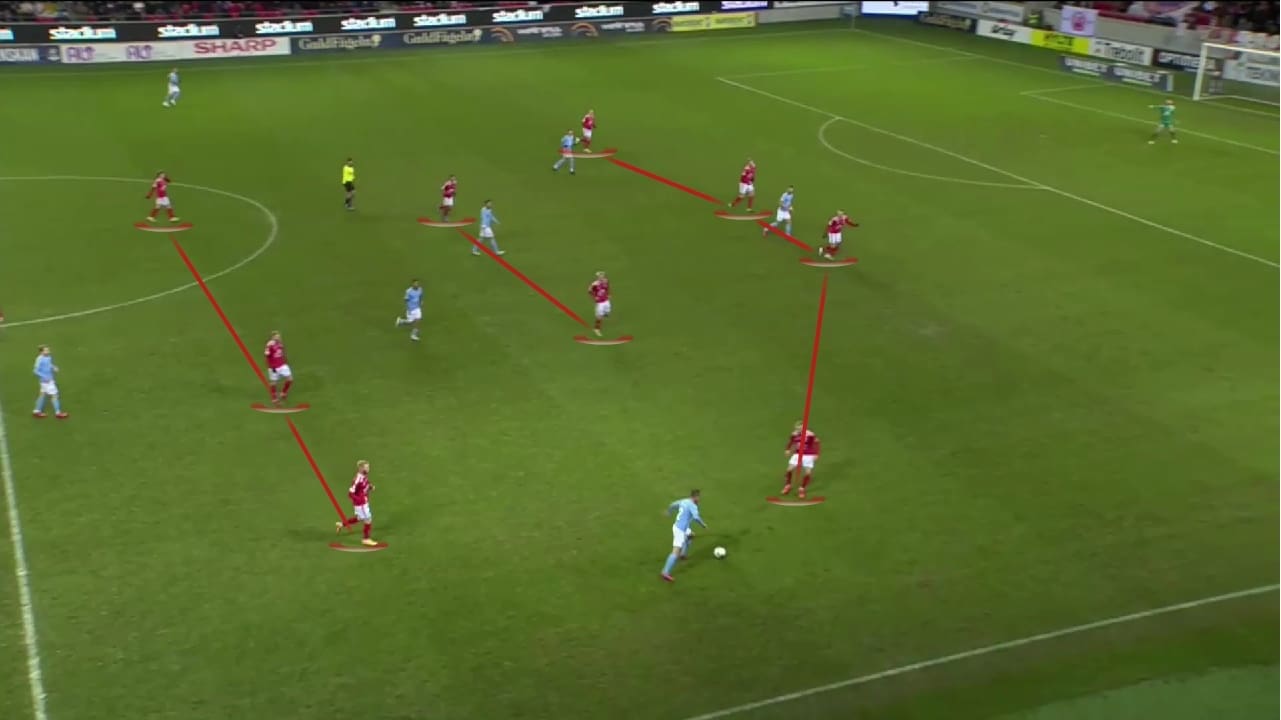
We can see that the fullback moves out of his line to quickly close down their progression and delay their attack, buying their teammates enough time to get organised and start defending. We can see that he is not charging the ball carrier, but rather is holding the player and delaying the attack.
Upon winning the ball, Kalmar doesn’t want to lose their possession immediately, hence they restrain themselves from going for unrealistic counterattacks in the game. They look to quickly move the ball into an open space and wait for their attackers to join in the transition which, very often, takes place on their flank.
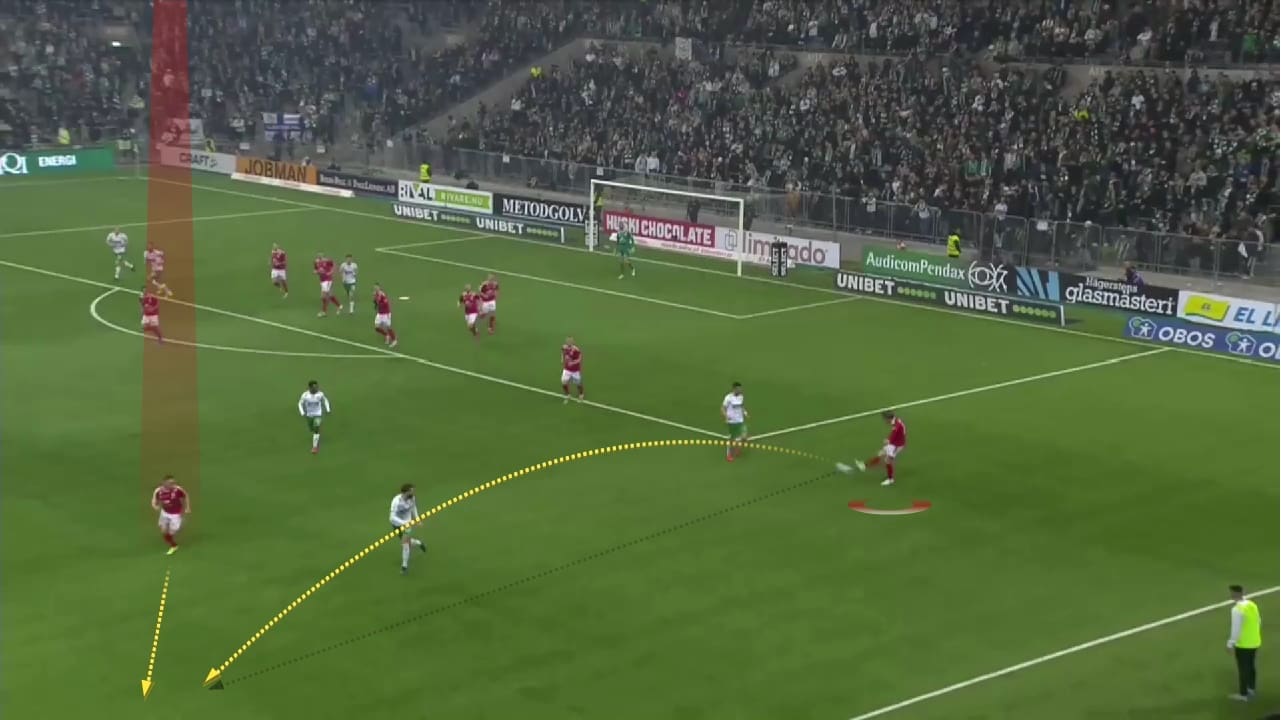
The first pass on winning possession is very important and Kalmar tend to play it through the flank. This way, they can progress the ball and wait for their teammates to join, while they can also prevent a direct attack if they lose possession immediately on the flanks.
Although the team looks to attack directly through the centre by overloading the attacking third, they tend to use the flank as a distraction or a key part in the transition to attack and in the build-up of the game.
Attacking phase
In their attacking phase, which starts from the build-up, their two midfielders play a crucial role in progressing the ball to the final third. They tend to mutually benefit themselves in the double-pivot role.
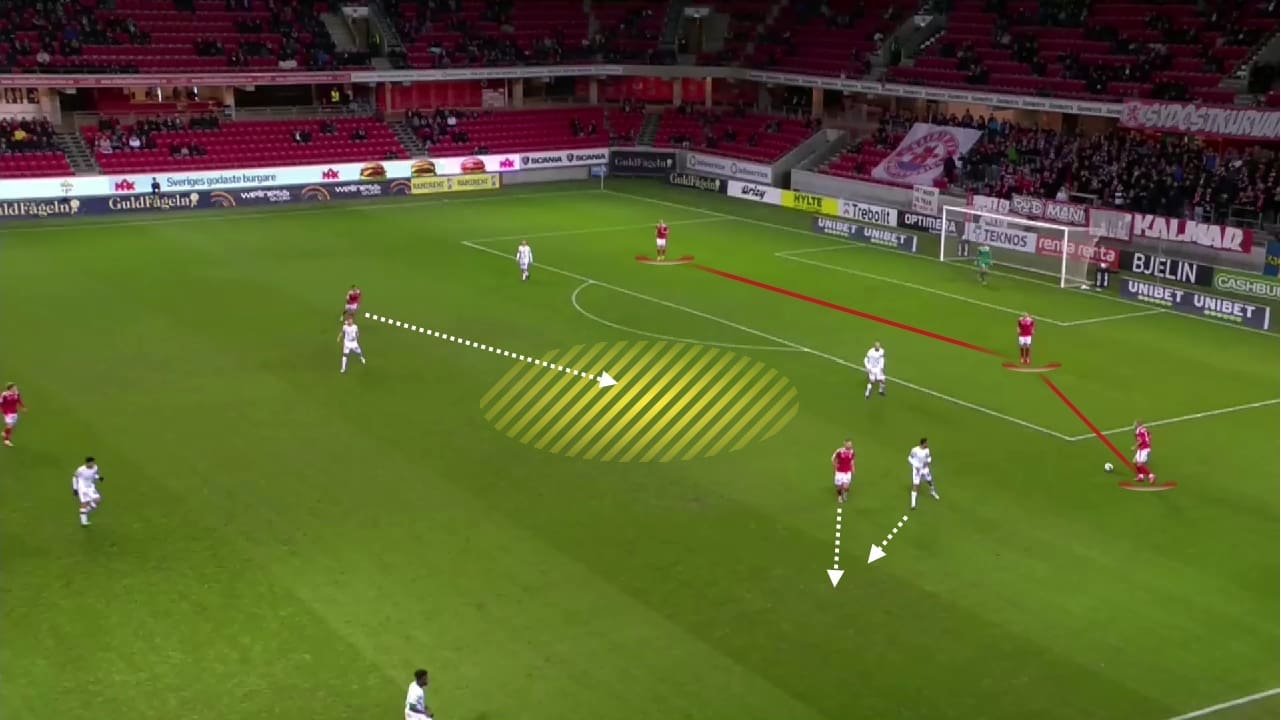
With the opponents marking high, the movements of these two pivots play a crucial role in creating space. One of them comes to the centre and then moves to the flank, dragging an opponent along with him and creating space in the middle. Meanwhile, the other pivot moves into this space to receive the ball. These lateral movements by the pivots with the attacking midfielders often dropping back to help them out often outnumbers the opponents in that area and help Rydström’s men to progress.
The 28-year-old Oliver Berg plays a crucial role in this system as the central attacking midfielder, who acts as their playmaker.
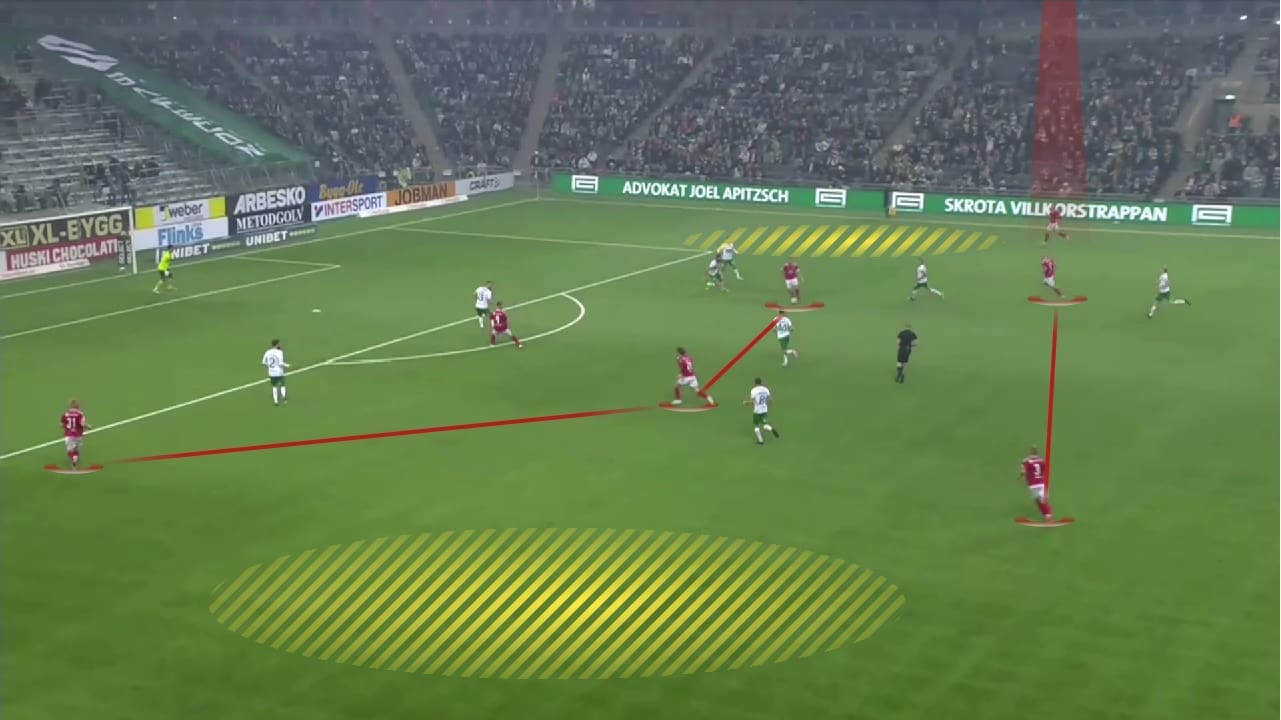
We can see that the players look to stick to their 4-2-3-1 formation. In order to attack through the central channels, the fullbacks move high as a decoy to pin the opponent’s players, creating enough space for the midfielders to move inside. In the picture, we can see that as the player moves inside, he creates space on the right flank and we can also see space on the left flank where the fullback tends to operate. Although the main idea is to use them as decoys and to overload the final third, they are also used as options to get into the box.
Kalmar has made the fewest cross attempts per 90, indicating that they look to go direct the majority of the time. The movements in the final third by the players are also synchronised.
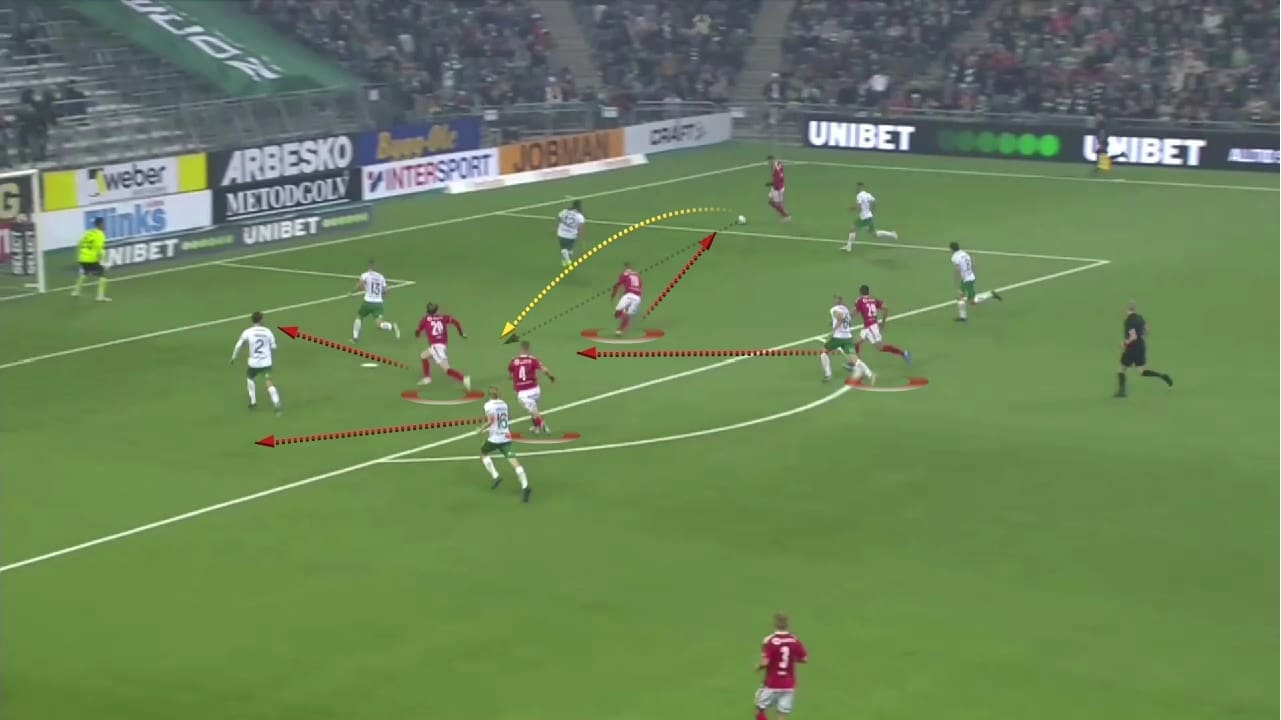
Considering the crossing situation as an example to analyse their movements inside the box at the time of final passes, we can see that the players move in different directions, dragging a defender along with them to create space in the middle and also provide options for the crosser to choose from. We can see a player moving towards the far post, one player moving towards the ball carrier and another moving straight into the 6-yard-box. These movements cause chaos for the defenders as they struggle to predict to whom the pass will be made.
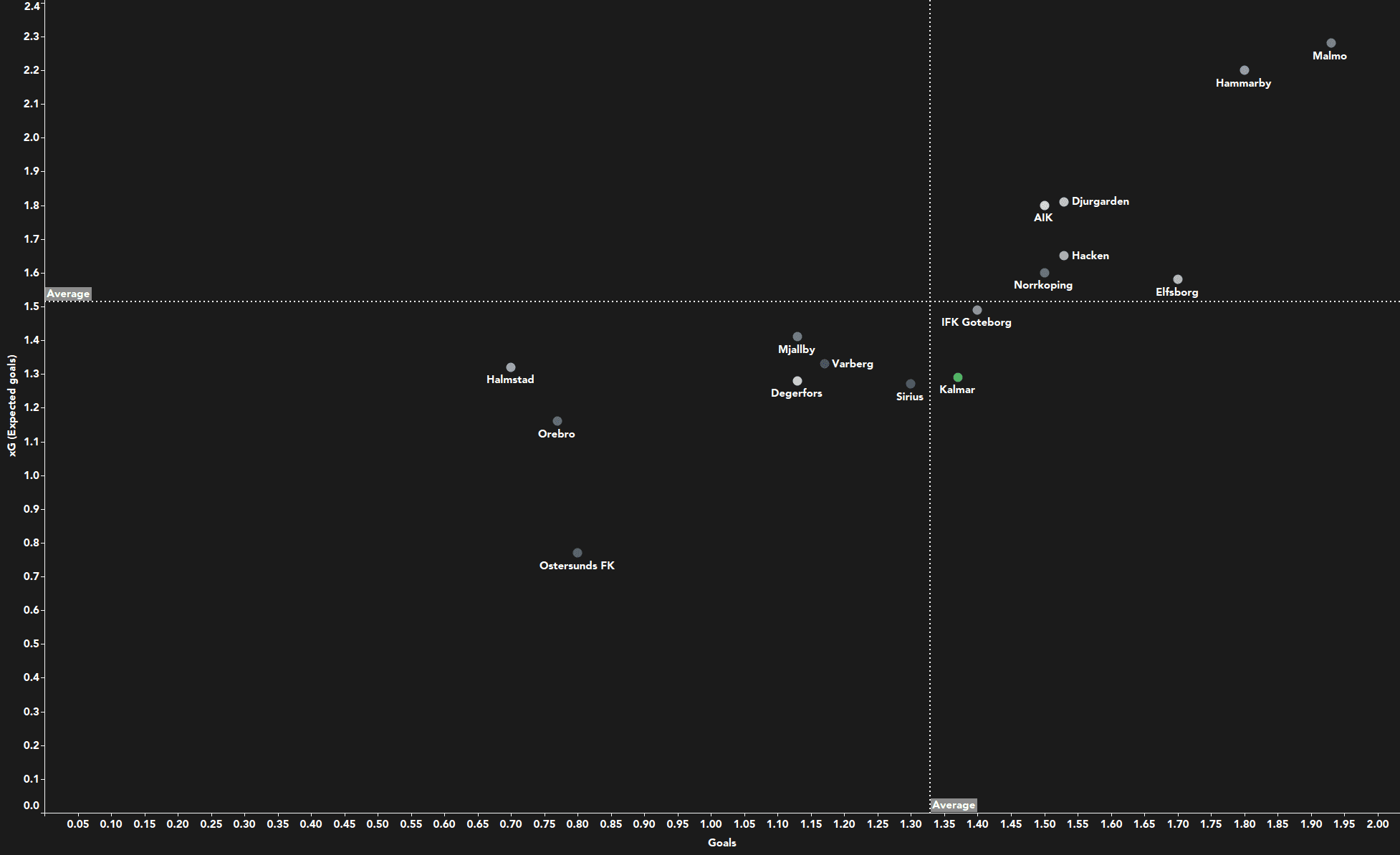
In terms of the team’s ability to finish, they have been really exceptional this season. Although they have failed to create more chances in a game, they have managed to convert their chances and overperform their xG per 90(1.29) and are at an average goal per 90 value of 1.37. Berg plays a crucial role in the team’s attacking phase, as he has 18 goal contributions this season and is a massive influence in the attacking third.
Conclusion
In his debut season as a coach for Kalmar, Rydström has been impressive and has been able to successfully make the team play how he wants them to. This is the indication that the coach is excellent with his ability to communicate with the players and also knows how to bring out the best from the group of players he has.
In 2021, Rydström is likely to develop the team further in the areas they lack and is likely to evolve along with the team while also developing his reputation as a successful coach and could compete for the Champions League spot if he plays his cards right! He soon will start attracting a lot of clubs from the top five leagues like LaLiga, Serie A etc.





Comments